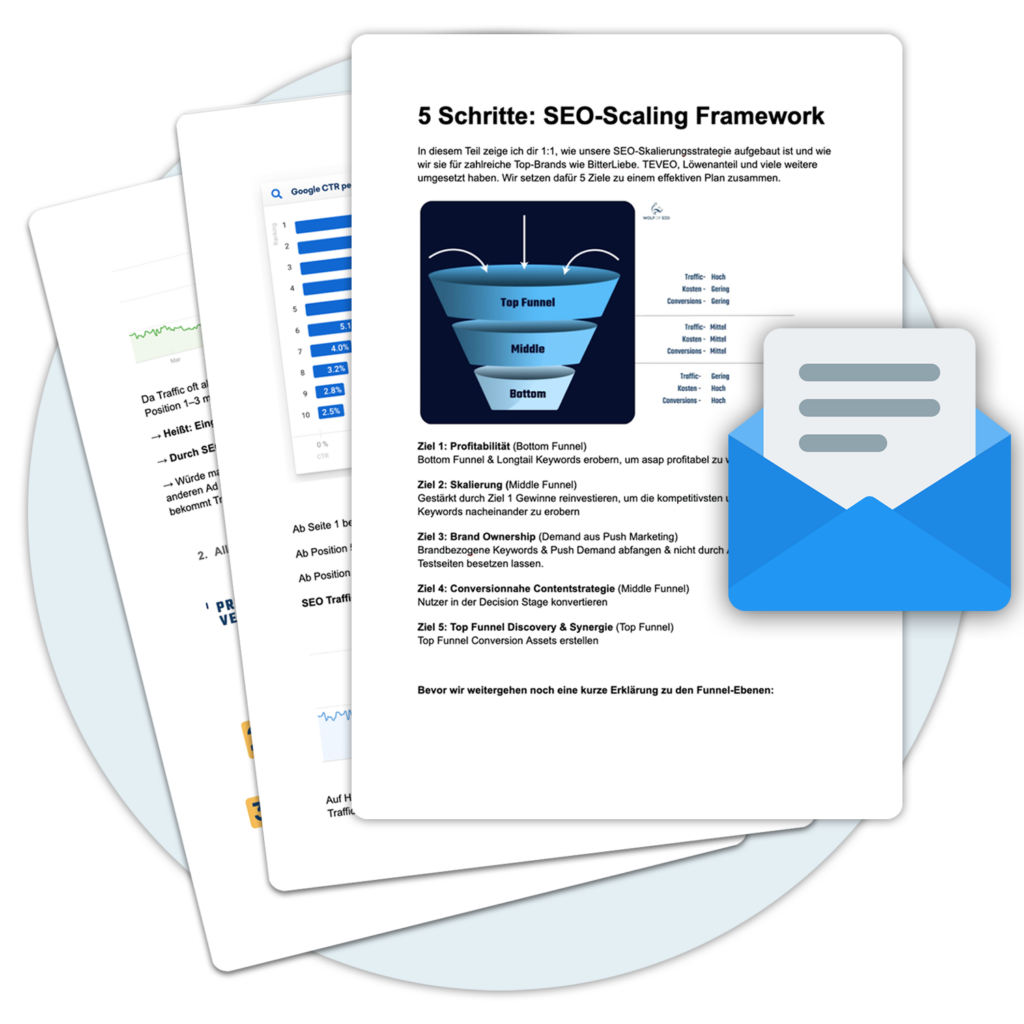The importance of the navigation structure for the user experience
The Navigation structure of a website plays a crucial role in the user experience. A clear and well thought out Navigation structure allows visitors to a website to easily and intuitively navigate and quickly find the information they need.
An unclear or confusing Navigation structure on the other hand, can be frustrating and cause users to leave the website prematurely. Some important factors that highlight the importance of a good Navigation structure underline are:
- A clear Navigation structure improves usability and makes it easy for users to navigate the website.
- Users can orient themselves more quickly and thus find the desired content faster.
- A good Navigation structure encourages visitor engagement and increases the likelihood that they will stay on the site and continue to interact.
- Positive user experiences lead to higher satisfaction and a positive perception of the website.
It is clear, then, that a well-planned and structured Navigation structure is essential to ensure a positive user experience.
What is navigation structure?
The Navigation structure is an essential part of a website and plays a crucial role in user experience. It defines the way the content of a website is organized and presented.
The Navigation structure is basically a guide for the visitors of a website that helps them navigate easily and intuitively through the different pages and sections of the website. It allows users to find the information they need quickly and efficiently.
A good Navigation structure is characterized by clarity and conciseness. It contains both main categories and subcategories, which are arranged logically and consistently.
Another important aspect of the Navigation structure is the placement of the navigation bar. Ideally, it should be highly visible and easily accessible so that users can find and use it quickly.
A clear and well thought out Navigation structure contributes significantly to the positive user experience by helping visitors navigate the site and achieve their goals.
Why is a clear navigation structure important?
A clear Navigation structure is a crucial factor for a positive user experience. It enables visitors to a website to find their way around quickly and intuitively. An unclear and confusing navigation, on the other hand, leads to users being frustrated and leaving the website early.
Another reason for a clear Navigation structure ist die Suchmaschinenoptimierung (SEO). Eine gut strukturierte Navigation erleichtert es den Suchmaschinen-Crawlern, die Inhalte der Website zu indexieren und zu verstehen. Dadurch erhöhen sich die Chancen, dass die Website in den Suchergebnissen besser platziert wird.
In order to achieve a clear Navigation structure it is important to keep the needs and expectations of users in mind. Navigation should be simple and consistent so that users can quickly get used to the structure. The use of meaningful names for the navigation points is also of great importance.
The basics of an effective navigation structure
An effective Navigation structure is crucial to the user experience on a website. It enables visitors to move around the site easily and intuitively and to find the desired content quickly. Clear and well-structured navigation not only improves usability, but also has a positive impact on SEO and conversion rates.
To ensure an effective Navigation structure there are some basic principles that should be followed:
- Simplicity: The navigation should be simple and clear so that visitors are not overwhelmed and can easily find their way around.
- Consistency: It is important that navigation is consistent across all pages of the website. This means that the same menu items and subcategories should be used to ensure a consistent experience.
- Keeping the user in focus: In the design of the Navigation structure should always focus on the user. It is important to put yourself in the visitors' perspective and take their needs and expectations into account.
By adhering to these fundamentals, an effective Navigation structure be created that offers visitors a pleasant and user-friendly experience. A well-designed navigation can not only increase user engagement and satisfaction, but also lead to better visibility in search engines and a higher conversion rate.
Simplicity and consistency in the navigation structure
Simplicity and consistency are crucial aspects of effective Navigation structure. A simple structure allows users to quickly navigate your website and find the information they need. A complicated or cluttered navigation, on the other hand, can lead to confusion and increase user frustration.
To make a simple Navigation structure you should limit the number of main categories. Too many main categories can lead to cluttered navigation. Instead, focus on the most important areas of your website and group similar content together.
Consistency is also important to ensure a pleasant user experience. Make sure your navigation is consistent across all pages. Use the same terms and icons so as not to confuse users.
A clear Navigation structure can also help to increase users' confidence in your website. If they can find their way around easily and get to the information they want quickly, they are more likely to stay on your website longer and continue browsing.bern.
Always keep the user in focus
When designing a Navigation structure it is essential to To have users always in view. Finally, the navigation serves to make it as easy as possible for him to find the desired content and information. Here are some points that should be taken into account:
- Relevance: The navigation should prominently highlight the most relevant pages or categories for the user. It is important to take into account his needs and interests.
- Intuitive layout: The menu items and sub-items of the Navigation structure should be arranged logically and understandably. The user should be able to find his way intuitively and quickly reach the desired goal.
- Visibility: The navigation should be clearly visible and easy to find, ideally in a familiar position such as the header or sidebar. It is also important that the navigation is easy to read and use on all devices.
- Brevity and conciseness: The names of the menu items should be short, concise and easy to understand. Avoid technical terms or abbreviations that the user may not know.
- Submenus: If there are many pages or subcategories, it may be useful to use submenus. This makes the navigation clearer and the user can search more specifically according to his interests.
By always keeping the user in focus, you can ensure that the Navigation structure is user-friendly and effective. A good navigation contributes significantly to a positive user experience and can thus have a positive impact on the conversion rate.
Structure and SEO: hand in hand to success
The structure of a website and search engine optimization (SEO) are interconnected and influence each other. A well planned Navigation structure is essential for a successful SEO strategy.
With clearly structured navigation, users can navigate through a website intuitively and easily. This leads to an improved user experience and increases the likelihood that they will stay longer on the website and visit more pages. By keeping bounce rates low, website operators can gain the trust of users and increase their conversion rates.
The Navigation structure also has a direct impact on SEO. A logical and clear structure makes it easier for search engines to index and understand the website's content. A well optimized Navigation structure allows search engine crawlers to find and rank relevant pages faster. This improves the chances that the website will rank higher in search results.
To ensure that the Navigation structure of a website is well optimized for SEO, some best practices should be followed. These include:
- Simple and clear menu items: Avoid confusing or complex names for menu items. Navigation should be easy for the user to understand.
- Consistent hierarchy: Make sure that the hierarchy of the Navigation structure is consistent. A clear and consistent structure makes it easier for users and search engines to crawl the website.
- Meaningful URLs: Use meaningful and search engine friendly URLs for the individual pages. This makes it easier for search engines to understand the content.
- Internal linking: Use internal links to create a connection between the different pages. This makes it easier for users and search engines to access relevant information.
A well planned and optimized Navigation structure plays a crucial role in the success of a website. It improves user experience, supports SEO and increases conversion rates. Therefore, it is important to invest time and attention in the development and optimization of the Navigation structure to invest. This is the only way to ensure that visitors easily find the content they want and take the actions they want.
How the navigation structure influences SEO
The Navigation structure of a website plays a crucial role for SEO. A well thought out and clearly structured Navigation structure enables search engines like Google to better index and understand the content of a website. A clear hierarchy and logical links in the navigation make it easier for search engines to grasp the page structure.
Another important aspect is the internal linkingwhich are characterized by the Navigation structure is made possible. Through a good internal linking the search engines can Relevance of the pages to each other and evaluate them. This results in better visibility in the search results.
A clearly structured Navigation structure also offers users better orientation on the website. They can navigate quickly and intuitively through the different pages and subpages. This has a positive impact on the user experience and helps visitors stay longer on the website and visit more pages.
Tips for an SEO-friendly navigation structure
An SEO friendly Navigation structure is crucial to the success of a website. It allows both users and search engines to effectively grasp and understand the website's content. Here are some tips on how you can create an SEO-friendly Navigation structure can create:
- Use understandable link text: The link texts in your navigation should be clear and precise to show users and search engines what content they can find on the various pages. Avoid general terms such as "homepage" or "products" and instead choose meaningful and clear terms.
- Keep your navigation simple: A cluttered and complex navigation can confuse users and affect their experience on your website. Make sure your navigation is simple and clear by presenting only the most important pages in the main navigation and linking less important pages in subcategories or in the footer.
- Optimize your URL-structure: The links in your navigation should be the URL-Struktur deiner Website widerspiegeln. Vermeide lange und unleserliche URLs mit vielen Sonderzeichen und setze stattdessen auf kurze, aussagekräftige und suchmaschinenfreundliche URLs.
- Structure your pages hierarchically: A clear hierarchy and structure of your pages makes it easier for users and search engines to navigate your website. Arrange related pages under each other and group them into logical categories.
- Implement internal linking: Use internal links in your navigation to make it easier for users to navigate and to help search engines find and index relevant content on your site. Use meaningful anchor texts that describe the content of the linked page.
Effects of the navigation structure on the conversion rate
A well designed Navigation structure can have a significant impact on the conversion rate of a website. The conversion rate is an important key figure that indicates how many visitors to a website become customers or leads.
By using the Navigation structure optimized, you can improve the user experience and help visitors find exactly what they are looking for. Clear and user-friendly navigation makes it easier for visitors to navigate the website and find the information or products they are looking for.
An unclear or confusing Navigation structure on the other hand, can lead to frustration among visitors and cause them to leave the page prematurely. This can lead to a low conversion rate and thus lost business opportunities.
An effective Navigation structure should take into account the following aspects:
- Simplicity: Clear and simple navigation makes it easy for visitors to find their way around the website.
- Consistency: All pages of the website should have consistent navigation so that visitors do not get confused.
- Usability: Navigation should be intuitive and user-friendly to provide a positive experience for visitors.
- Relevance: Navigation should be tailored to the needs and interests of the target audience to make relevant information and products easily accessible.
By observing these principles and Navigation structure continuously reviewed and optimized, one can increase the conversion rate of the website in the long run and contribute to a greater success of the online business.
Navigation structure as a key factor for conversion
A well planned Navigation structure is critical to a website's conversion rate. The way navigation is set up on a website can make the difference between a satisfied visitor who converts and a frustrated user who leaves.
With clear and well-structured navigation, users can get to the information they need quickly and easily. If, on the other hand, the navigation is confusing or unclear, the user is likely to leave the site and search with another provider.
A strategically designed menu tree can highlight important pages and subpages and help users navigate within the site. By integrating eye-catching call-to-action buttons and links into the Navigation structure the conversion rate can be further increased.
In order to Navigation structure as a key factor for conversion, it is important to understand the needs and expectations of users. An analysis of user behavior can help identify weak points in navigation and make appropriate improvements.
Another important aspect is the regular review and optimization of the Navigation structure. By analyzing user data and testing different variants, it is possible to find out which combination of menu items and subpages achieves the best conversion rate.
The Navigation structure of a website has a direct influence on the conversion rate and should therefore be carefully planned, optimized and regularly reviewed to ensure the success of a website.
Navigation structure review and optimization
The regular review and optimization of the Navigation structure of a website is crucial to ensure that visitors can quickly and easily find the information they need. A well designed Navigation structure helps improve the user experience and increase conversion rates.
During the review of the Navigation structure the following aspects should be considered:
- Clarity: Navigation should be simple and understandable. Avoid overly complex structures that could confuse the visitor. Use meaningful labels for navigation elements.
- Consistency: Make sure that the navigation is consistent on all pages of the website. This will increase usability and prevent visitors from getting lost in the structure.
- Relevance: The Navigation structure should be tailored to the needs and interests of the target group. Consider what content is most relevant to visitors and make sure it is easily accessible.
In order to Navigation structure various measures can be taken to optimize the process:
- Usability testing: Perform tests to find out how well the Navigation structure works and whether visitors can quickly find the information they need.
- Analysis of user behavior: Monitor user behavior on the website to find out which pages are visited the most and how visitors move through the Navigation structure navigate.
- Implementation of search functions: Complete the Navigation structure by a search function to enable visitors to search for specific content.
Through regular review and optimization of the Navigation structure you can ensure that your website is user-friendly and well-structured. This will increase visitor satisfaction and increase the likelihood of conversions.
How to identify navigation errors
A poorly structured Navigation structure can lead to numerous problems on a website. That's why it's important to identify and fix navigation errors early on. Here are some steps that can help you do that:
- Analyze the user data: Review your website analytics data to find out which pages users visit most often and how they navigate through your site. Look for pages with high bounce rates and long dwell times.
- Test the user experience: Conduct user testing to see how users are using your Navigation structure use and whether they have difficulty doing so. Observe whether they can find the pages they want quickly and easily.
- Check the internal linking: Make sure your internal links are working correctly and pointing to relevant pages. Also check if there are pages that receive too many or too few internal links.
- Observe the behavior of the users: Pay attention to how users navigate through your website. Are they frequently forced to use the back button? Are there pages or sections that users often skip?
Identifying navigation errors is critical to improving the user experience on your website and increasing conversion rates. An optimal Navigation structure ensures that visitors find what they are looking for quickly and intuitively.
Best practices for improving the navigation structure
In order to Navigation structure effectively and ensure an optimal user experience, there are some best practices that should be followed:
- Simple and clear categories: The Navigation structure should be simple and easy to understand. Clear categories and subcategories make navigation intuitive and user-friendly.
- Consistency: It is important to have a uniform Navigation structure throughout the website. This minimizes user confusion and makes it easier to find information.
- Avoidance of depth planes: Too many subcategories make navigation difficult and can lead to frustration. It is advisable to reduce the level of Navigation structure not to be too deep.
- Use of meaningful link texts: The link texts should be descriptive and give the user a clear idea of what is behind the link.
- Constant review and optimization: A regular review of the Navigation structure is important to identify possible errors and make improvements.
By following these best practices, the Navigation structure of a website are optimized to ensure a smooth and user-friendly experience.
Conclusion: The influence of a well-planned navigation structure
A well planned Navigation structure is of crucial importance for the user experience and the success of a website or online store. Clear and concise navigation makes it easier for users to navigate the website and find the information or products they are looking for.
An effective Navigation structure not only helps to attract users' attention and keep them on the website, but also has a direct impact on the conversion rate. If users have difficulty finding the pages they want or get lost in an unclear menu, they are less likely to take an action, be it a Purchasing, registration or contacting us.
To ensure an optimal user experience, it is important to use the Navigation structure be reviewed regularly and adjusted if necessary. Navigation errors should be identified and corrected to provide users with a smooth and intuitive navigation experience.
In the optimization of the Navigation structure some best practices should be taken into account. For example, it is important to keep the navigation simple and consistent so that users are not confused. Likewise, the structure of the website should be closely linked to search engine optimization (SEO) to ensure good visibility in search engine results.







